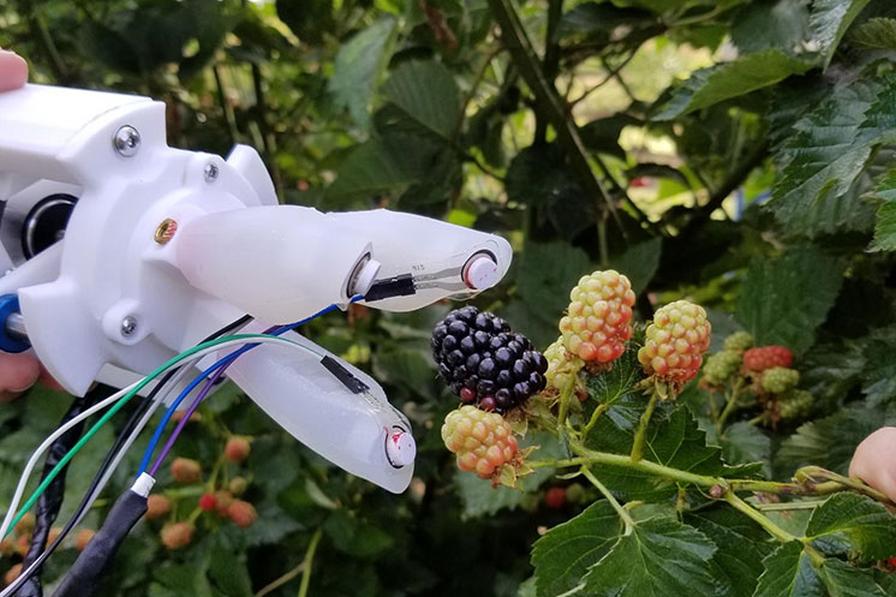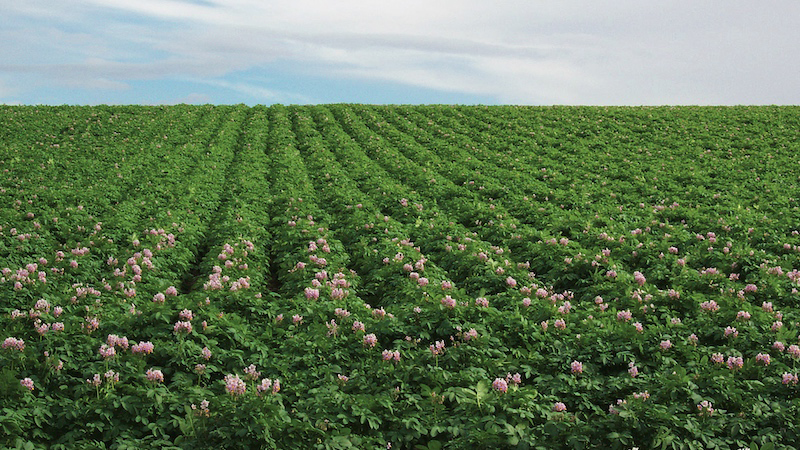Scientists Make a Grab at Automated Blackberry Harvesting

Can blackberry harvesting be made easier? Scientists at Mississippi State University, collaborating with Georgia Tech University and the University of Arkansas, have developed a robotic blackberry picker. Photo by Anthony Gunderman, Georgia Tech University and University of Arkansas System Division of Agriculture
Mississippi State University Assistant Professor Xin Zhang, of the Department of Agricultural and Biological Engineering, is working with a university team to automate the harvest process for ripe blackberries.
In the university’s Mississippi Agricultural and Forestry Experiment Station, Zhang and her team are developing a blackberry detection and localization system, the “eyes” and “brain” of a robotic harvester system powered by an innovative, artificial intelligence-driven deep learning approach. Zhang is co-principal investigator on a $1 million multi-institutional effort funded by the USDA National Institute of Food and Agriculture National Robotics Initiative 3.0 (NRI-3.0) program in collaboration with the National Science Foundation.
As the MSU team develops this critical component of the automated harvester, partners at Georgia Tech are working on a soft touch robotic arm and gripper and a bipedal mobile platform to work hand-in-glove with the MSU-trained perception system. The prototype gripper is equipped with sensors located at the ends allowing it to grasp and pick the berry without squeezing and damaging it. University of Arkansas scientists are focused on postharvesting fruit analysis.
The perception system designed by Zhang and her team is powered by YOLOv8 (You Only Look Once, version 8), a vision-based object detection model that identifies and locates objects of interest—in this case, ripe blackberries—quickly and accurately. This kind of technology is powerful enough to support robots, surveillance systems and self-driving cars.
The team trained a series of YOLO models to not only identify each blackberry on a bush but also detect its level of ripeness, from ripe (black in color), to ripening (red) and unripe (green). The process utilized more than 1,000 images from plant canopies in various Arkansas commercial orchards, preparing the system to simultaneously single out ripe berries for harvest and keep track of others in preparation for the next round of picking.
RELATED CONTENT: Getting a Better Grip on Automated Apple Harvesting
“Our main focus is detecting the ripe berries for the robotic harvester, but we added the other two categories to provide a total berry count,” Zhang says. “This way, the system not only identifies harvest-ready berries but also helps provide growers estimates of their total harvest.”
During tests with multiple configurations and variants, the best-performing model was 94% accurate in identifying ripe berries, 91% for ripening berries and 88% for unripe berries. It also detected impressively high-resolution images in real-time, clocking 21.5 milliseconds per image.
For more, continue reading at mafes.msstate.edu.









